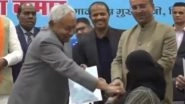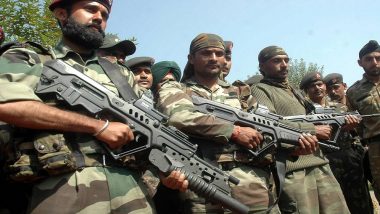India was the world’s largest importer of major arms in 2013–17 and accounted for 12 per cent of the global total. Its imports increased by 24 per cent between 2008–12 and 2013–17, according to new data on arms transfers published today by the Stockholm International Peace Research Institute (SIPRI). This trend has continued since 2007 as it has year-on-year increased the imports of arms from 9.7% in 2007–11 to 12.8% in 2012–16.
These arms import numbers include for example the long-delayed procurement of 72,400 assault rifles and 93,895 close-quarter-battle carbines for the Indian Army and the Rafale fighter jets from France for the Indian Air Force.
Who sells to India?
Russia accounted for 62 per cent of India’s arms imports in 2013–17. However, arms imports from the U.S. rose by 557 per cent between 2008–12 and 2013–17, making it India’s second largest arms supplier. Israel (11%) follows U.S. (15%) as India’s third largest arms supplier followed by the United Kingdom and France.
‘The tensions between India, on the one side, and Pakistan and China, on the other, are fuelling India’s growing demand for major weapons, which it remains unable to produce itself,’ said Siemon Wezeman, Senior Researcher with the SIPRI Arms and Military Expenditure Programme.
Despite its continuing tensions with India and ongoing internal conflicts, Pakistan’s arms imports decreased by 36 per cent between 2008–12 and 2013–17. Pakistan accounted for 2.8 per cent of global arms imports in 2013–17. Its arms imports from the USA dropped by 76 per cent in 2013–17 compared with 2008–12.
China
China’s arms imports fell by 19 per cent between 2008–12 and 2013–17. Despite this decrease, it was the world’s fifth largest arms importer in 2013–17.
In 2013–17 China accounted for 68 per cent of the arms imported by Myanmar, followed by Russia (15 per cent). Wezeman explains, “China, by contrast, is becoming increasingly capable of producing its own weapons and continues to strengthen its relations with Pakistan, Bangladesh and Myanmar through arms supplies.”
China, with its systematic drive to build a strong defence-industrial base (DIB) figures among the world’s top-five arms exporters after the US, Russia, France and Germany. They together account for 74% of all arms exports, according to a report in Times of India.
India, however, continues to wallow with a fledgling DIB and its armed forces source 65% of their requirements from abroad. Successive governments have failed to overhaul the Defence Research and Development Organisation.
The SIPRI Arms Transfers Database contains information on all international transfers of major weapons (including sales, gifts and production licences) to states, international organizations and armed non-state groups from 1950 to the most recent full calendar year, 2017. SIPRI data reflects the volume of deliveries of arms, not the financial value of the deals.
(The above story first appeared on LatestLY on Mar 13, 2018 11:36 AM IST. For more news and updates on politics, world, sports, entertainment and lifestyle, log on to our website latestly.com).













 Quickly
Quickly












